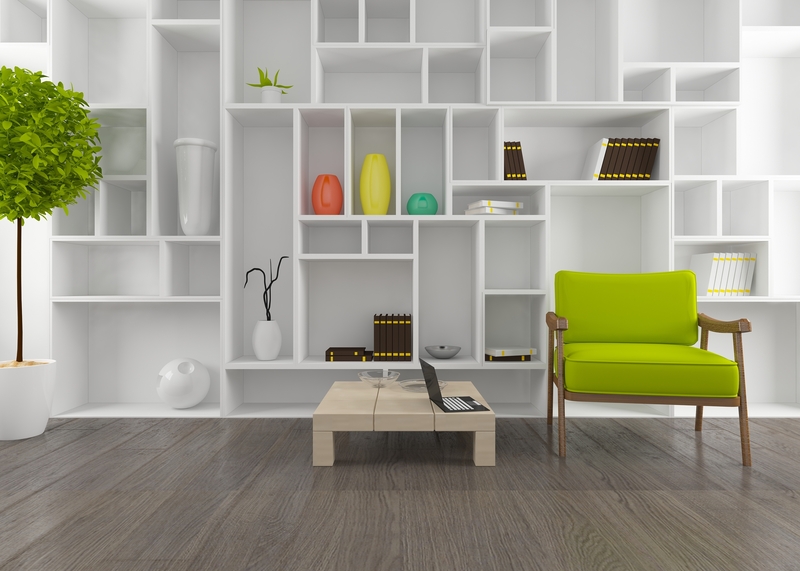Keep Your Sofa Pristine: Long-Term Storage Techniques
Posted on 17/05/2025
Keep Your Sofa Pristine: Long-Term Storage Techniques
Are you planning a move, renovation, or just need to declutter for a while? Storing your sofa for an extended period can be a daunting task, especially if you want to preserve its original beauty and comfort. Improper storage can lead to issues like mold, mildew, odors, and physical damage. Thankfully, with the right techniques, you can keep your sofa in immaculate condition--even after months or years in storage.
Why Proper Sofa Storage Matters
Your sofa isn't just another piece of furniture--it's an investment in comfort and style. If you aim to reuse or resell your sofa in the future, maintaining its appearance and structure is essential. Exposure to dust, humidity, pests, and fluctuating temperatures during storage can cause irreversible damage. Understanding the importance of long-term storage techniques for sofas will help you avoid costly mistakes.
Benefits of Ideal Sofa Storage
- Prevents structural damage (frame, springs, cushion sag)
- Preserves fabric or leather quality (avoids fading, cracking, staining)
- Protects against pests and mold (no nasty infestations)
- Keeps upholstery smelling fresh (no musty odors)
- Maintains resale value (looks almost new when retrieved)

1. Prepare Your Sofa for Storage
Proper preparation is the key to keeping your sofa pristine during storage. Here are the crucial steps you must take:
Clean Thoroughly
Start by cleaning your sofa from top to bottom to eliminate dust, dirt, and grime. Lingering debris, food particles, or oils can lead to staining or attract pests over time.
- Vacuum all surfaces, including under the cushions and in crevices.
- Spot-treat stains following the fabric or leather care label instructions.
- Use a gentle upholstery cleaner for fabrics, or a leather-safe cleaner and conditioner for leather pieces.
- Allow the sofa to dry completely before wrapping--any moisture can cause mold and bad odors.
Disassemble if Possible
Many modern sofas can be partially or fully disassembled. Remove detachable legs, cushions, and arms if possible. Keep all hardware in a labeled bag for easy reassembly. This makes your sofa easier to transport, and minimizes the risk of breakage.
Protect Delicate Components
- Wrap feet, corners, and arms with bubble wrap or moving blankets.
- Use furniture pads to add an extra layer of protection against bumps during moving and storage.
2. Select the Perfect Storage Location
The right storage environment makes all the difference to your sofa's longevity.
Choose Climate-Controlled Storage
Heat, humidity, and cold can devastate wooden frames, fabric, and especially leather sofas. For the best results, opt for a climate-controlled storage unit. This is especially critical for premium upholstery, suede, or antique sofas that are more sensitive to environmental changes.
- Look for indoor units that maintain a stable temperature (ideally between 55-75?F / 13-24?C) and humidity (no more than 50%).
- Consider air filtration systems that keep the air fresh and reduce dust accumulation.
Avoid Outdoor Storage
Outdoor sheds, garages, or containers lack climate control and expose your sofa to rain, extreme temps, humidity, and pests. Use these only as a last resort, and double down on protective measures if necessary.
3. Wrap and Cover Your Sofa Properly
Covering your sofa correctly is essential to safeguarding it from dust, dirt, pests, and scratches. However, the wrong materials can trap moisture and encourage mold.
Best Materials for Covering a Sofa
- Breathable furniture covers--Heavy-duty fabric or cotton covers are ideal, as they protect while allowing air circulation.
- Blankets or moving pads--Wrap in several layers for extra cushioning, especially at corners and on arms.
- Plastic wrap (with caution)--If you must use plastic, wrap loosely and leave gaps for air, or place plastic wrap only on the base to keep out ground moisture.
Avoid sealing the sofa in plastic entirely. This is one of the most common mistakes and can result in condensation--and eventually, mildew.
Tips for Wrapping Your Sofa
- Start from the bottom and work your way up, tucking covers in around cushions and backrests.
- Secure covers with twine or cord, not tape (which can leave sticky residue or damage fabric).
- Check covers periodically to ensure nothing has shifted, and for early signs of moisture or pests.
4. Position Your Sofa Wisely in Storage
The placement of your sofa within the storage space dramatically affects its condition upon retrieval.
Keep it Off the Ground
- Use pallets, risers, or blocks to elevate the sofa at least a few inches above the floor. This prevents contact with damp surfaces and allows air circulation.
Mind the Airflow
Leave a gap of at least 4-6 inches (10-15 cm) between the sofa and walls or other items. This ensures proper air circulation and reduces the risk of mold and mustiness.
Store Vertically or Horizontally?
Always store your sofa flat, on its feet--never on its side or stacked under other items. Storing a sofa on its side can warp the frame and compress cushions unevenly.
- Never stack heavy boxes or objects on top of sofas.
5. Protect Against Pests and Moisture
Even in the cleanest storage facilities, pests are a risk--especially for fabric and leather sofas.
Deter Rodents and Insects
- Use natural deterrents: Elevate the sofa, sprinkle cedar chips or lavender pouches nearby, and consider wrapping legs with sticky pest tape.
- Don't store food (even crumbs!) on or near the sofa.
- Inspect for droppings or nests when you check on your storage unit.
Moisture Prevention Tips
- Place silica gel packets or moisture absorbers underneath and around the sofa.
- Check for leaks or damp patches on walls and floors before moving your sofa in.
6. Special Tips for Leather and Antique Sofas
Leather and antique sofas need extra attention in storage as they are highly sensitive to temperature changes and moisture.
Leather Sofa Storage Techniques
- Clean and condition the leather thoroughly to prevent cracks and drying out.
- Avoid plastic covers; instead, use a soft, breathable cloth or upholstery cover.
- Maintain humidity levels to prevent the leather from curling, stiffening, or molding.
- Inspect every few months for early signs of damage.
Protecting Antiques and Delicate Upholstery
- Never stack on or under antiques-- their frames are easily damaged.
- Consider professional storage services for high-value antiques.
- Mark fragile items clearly to ensure careful handling during moving and retrieval.
7. Retrieve and Restore Your Sofa After Storage
Ready to bring your sofa back home? A little TLC ensures it returns to its former glory.
How to Unpack Your Sofa Safely
- Remove covers and wrappers outdoors to avoid bringing dust inside.
- Vacuum again to remove dust and any surface pests.
- Aerate the sofa in a well-ventilated space for a few hours.
- Wipe down leather or wood sections with appropriate cleaners.
- Replace removable parts (legs, cushions, hardware) following your label system.
Refreshing Upholstery
If your sofa absorbed any odors, sprinkle baking soda on fabric and vacuum thoroughly. For leather, a gentle wipe with a damp, soapy cloth followed by conditioning will restore softness and shine.
What to Avoid: Top Sofa Storage Mistakes
Avoid these common errors to ensure long-term sofa preservation:
- Storing a damp or dirty sofa, which leads to odors and mold
- Wrapping too tightly in plastic, causing trapped moisture
- Keeping the sofa directly on the floor, exposing it to water damage
- Allowing sharp or heavy objects nearby--potential scratches or dents
- Neglecting to check on your storage unit from time to time

Frequently Asked Questions About Long-Term Sofa Storage
Can I store my sofa in a garage?
While a garage provides space, it lacks climate control and exposes your sofa to temperature swings, humidity, and pests. Only use a garage for very short-term storage, or take extra steps to protect your sofa.
How should I store sofa cushions?
- Remove all detachable cushions.
- Vacuum, clean, and allow them to dry thoroughly.
- Wrap in breathable fabric covers or bags.
- Store flat on shelves, never stacked tightly or standing on edge.
Is insurance necessary for stored furniture?
Yes! Even in the best facilities, accidents happen. Consider insuring your storage unit contents, especially valuable sofas made of leather or antique frames.
How often should I inspect my stored sofa?
Check at least every 3-6 months for signs of moisture, pests, or shifting. Early detection helps prevent serious damage and keeps your sofa pristine.
Conclusion: Enjoy a Pristine Sofa After Long-Term Storage
With the right long-term sofa storage techniques, your favorite couch will look and feel as good as new when you need it again. A little preparation and the proper environment can prevent costly and unsightly damage. Remember to clean the sofa first, use breathable covers, elevate and protect it from moisture and pests, and choose a climate-controlled storage unit whenever possible. By following these best practices, your sofa will be right there waiting for you--pristine and inviting--for years to come!
Ready to store your sofa the right way? Keep this guide handy and enjoy peace of mind knowing your sofa's comfort, style, and value will last well beyond its time in storage.



 Guide price for the hire of a Transit Van /up to 300 cu ft/.
Guide price for the hire of a Transit Van /up to 300 cu ft/.